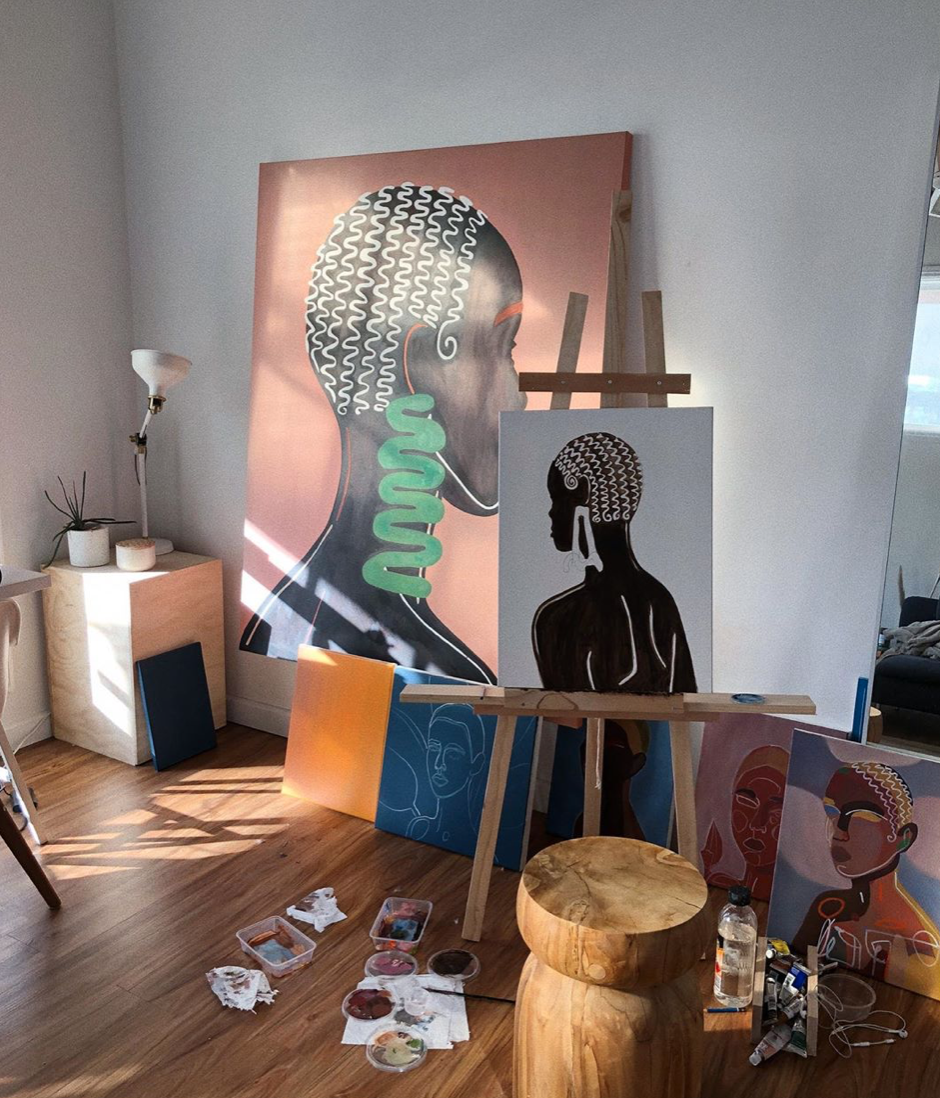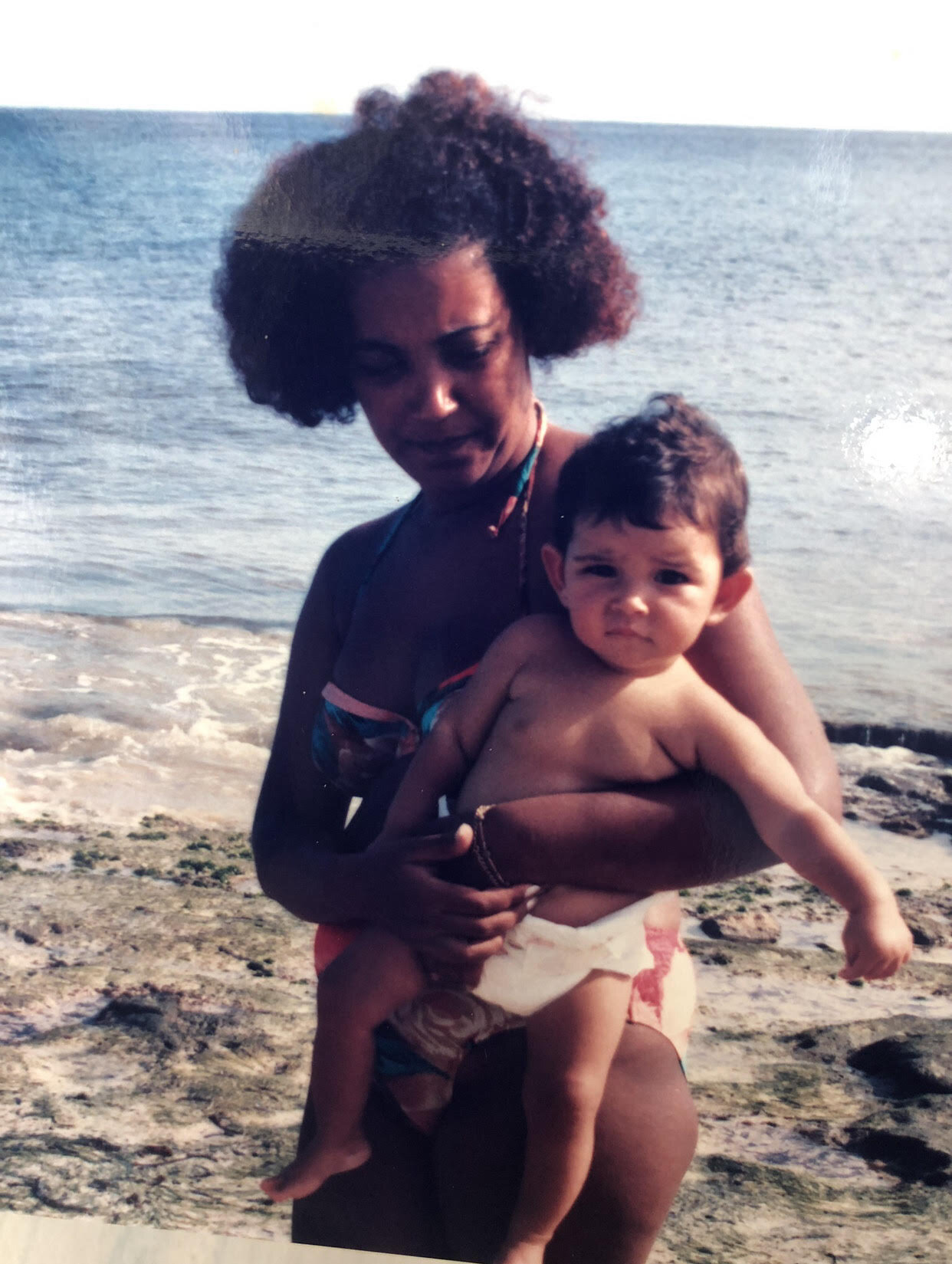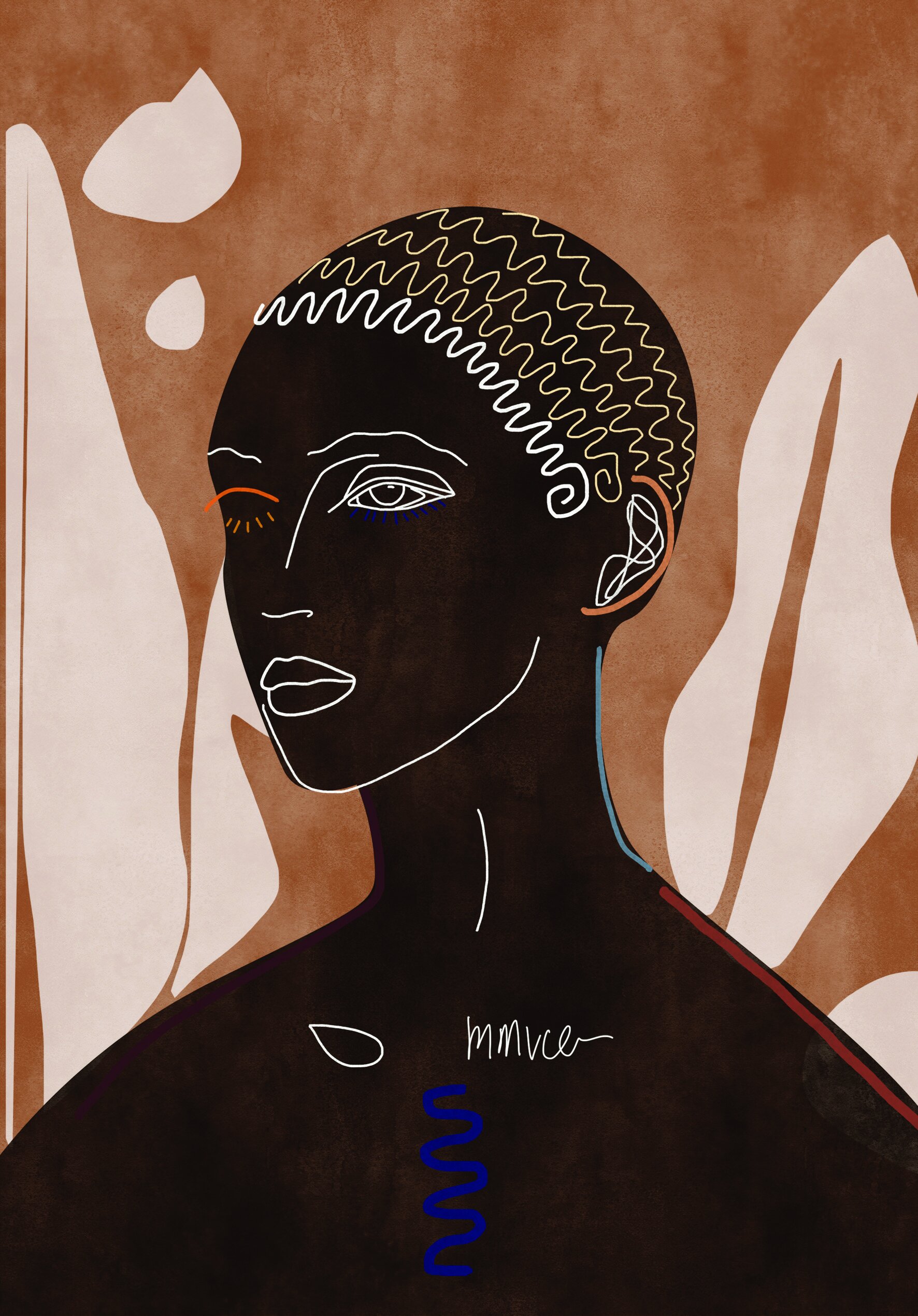CRWNMUSE Mafalda Vasconcelos uses Ancestry as a Lifeline
Sitting down with this CRWNMUSE Mafalda Vasconcelos to chat about fine art and how her biracial identity show up in her practice.
Ashley Johnson: What's in your studio? What objects, music, light or textures—anything—inspire and fill your space? Why does it matter?
Mafalda Vasconcelos: Living away from Mozambique means that I try to surround myself with as much of it as I can. Perhaps that is also why I paint Mozambican women, to surround myself with them again. My studio has a lot of books about African art but also books about different ethnic groups and cultures of Africa, which is where I find inspiration. All of the textures in my studio are natural like wood, straw and cotton fabric. I have been listening a lot to Tony Allen lately, he was truly one of the greatest. My creative process is ritualistic and so I need to surround myself with the right objects.
AJ: Is creating essential to who you are? How, why, and what is your favorite part of the creative process?
MV: Creating is absolutely essential to who I am and has been since I was a child. I create simplistic abstract portraits of Black women inspired in the women of Mozambique, especially the women in my family. I then transform these drawings into more complex works by layering geometric shapes and lines of different colors. My favourite part of the creative process is researching symbolism in different Mozambican ethnic groups, which I try to incorporate in my work.
AJ: In your bio you talked about being mixed race and how that impressed on you. How has your upbringing and how that influenced your art? Can you speak to any specific memories you have with growing up with a mother with hair different than yours?
MV: My mother and her side of the family is native Mozambican; however, my father was born in Portugal of Portuguese descent but spent almost all of his life in Mozambique. I grew up in Maputo, surrounded by my African family and culture. Every time my family got together, we had small ceremonies to our ancestors. It was rude to have a gathering without acknowledging and honouring our ancestors. So, ancestry has become crucial within my life and my work.
Growing up, I spent most of my time with my mother and maternal grandmother. My great-grandmother, Faneta, lived in the north but also visited us at times. She was a simple woman, could not read or write and cultivated her food in her small bit of land. She became an important character and soul in my art. My father traveled a lot for work and my sisters are 14 and 15 years older than me, so they were out of home when I was very young.
My mother went to the hairdresser every week and she started taking me with her when I was around two. Her good friend and hairstylist would always tell stories of me being in the salon when I could barely talk, I loved taking the hair rollers out of their drawers and then arrange them by colour. From when I was a teenager, I always looked forward to Tuesday afternoons when my mom and I went to the hairdresser together. If I did anything to my hair, my treatments took 30 minutes, it was only a wash and blow dry. My mother’s treatments took 2 hours or more and I would sit and watch. I grew up with the notion that my hair was just hair. In contrast, to my mother and many black women, hair is so much more than just hair. Hair is an important part of her identity even if she had relaxing treatments done at times. My father, a white man, told my mother how much he loved her natural curls. He said it every day and it became one of my strongest memories. I love her natural hair too and so many of the women I draw have curly hair to honour her beauty.
I am now a 27-year-old woman and I still only go to the hairdresser with my mother. It has become such an important part of our relationship.
AJ: Characterize the major themes or processes within your work. Why are you drawn to creating under said theme(s)/processes and who does your work speak to?
MV: My creative process is very personal and spiritual. The theme of my work is complex and also personal, referencing back to my culture and my identity. My great grandmother was from the Nharinga people of the north of Mozambique, in Maganja da Costa. The Nharinga were an isolated and small ethnic group but due to assimilation, much of their culture was lost and was not documented. I piece parts of what I know about this culture together in my art because I can’t learn that much about it anymore. I use my art as a way to connect to my culture and my ancestors.
My work is dedicated to the black women who raised me. The female figures in my life have always inspired and taught me the most about myself, my culture and about the world. I draw women figures and as a reference to the Divine Feminine energy that these women represent. I also see Africa the continent as a feminine and maternal figure so, my work is also an allegory of Africa. I always paint Africa in my work.
My process involves symbolism and abstraction of the human figure. I developed a visual language intuitively, based on the symbolism in African art, namely in fabric patterns and ceremonial masks. I use line drawings and geometric shapes of different colors layered to create abstract portraits. These portraits are a reference to souls instead of real human figures, based in the concept of ancestry; I try to convey real human emotion which is also what ancestry energy symbolizes.
AJ: What responsibility (if any) do you feel you have as a creative to sharing images of, or creating alongside black women?
MV: I believe it is my responsibility to create portraits inspired on the women who raised me and inspired in my culture because it is such a big part of my identity and my story. I am very grateful for my heritage and for being able to share these stories with other people.
AJ: Can you talk about your signature style? What influences your style and color narratives?
MV: My parents love African art and I grew up surrounded by it at home. There are Makonde masks and objects everywhere in their home, there are large scale paintings by Mozambican artists and prints by the renown Malangatana and Chichorro. My surroundings growing up inform much of my current work in terms of color and symbolism.
I developed a visual language intuitively, based on the symbolism in African art, namely in fabric patterns and ceremonial masks. I portray abstract facial features through the use of geometric shapes and lines. To me, these portraits represent souls rather than real people. I try to convey human emotion and African beauty in my art. The colors I use are mainly black, white and bright or pastel colors; I use color as a way to highlight these abstract facial features and to contrast different shapes to create dimension. The fact that I come from a fashion design background also influences my work, mainly in the use of accessories and in the poses of the women I draw.
AJ: What phase are you in as an artist? In what ways is your work evolving (if any).
MV: I would say I am probably an emerging artist. Academically, I was trained as a fashion designer and started fashion illustration as a career after graduation. I have worked hard to develop my signature style of work which I started through digital and traditional drawing. My older works are mainly using those techniques and the themes are much more fashion related. Currently, most of my work is in oil painting and hand drawings, small and large scale, using a much more mature and toned-down color palette.
Visit Mafalda's site here to learn more about her and her work!
The CRWNMUSE Program spotlights the exceptional taste, art and magic of creators from everywhere. Interested in being a CRWNMUSE? Submit a body of work or a mix of your work here!












